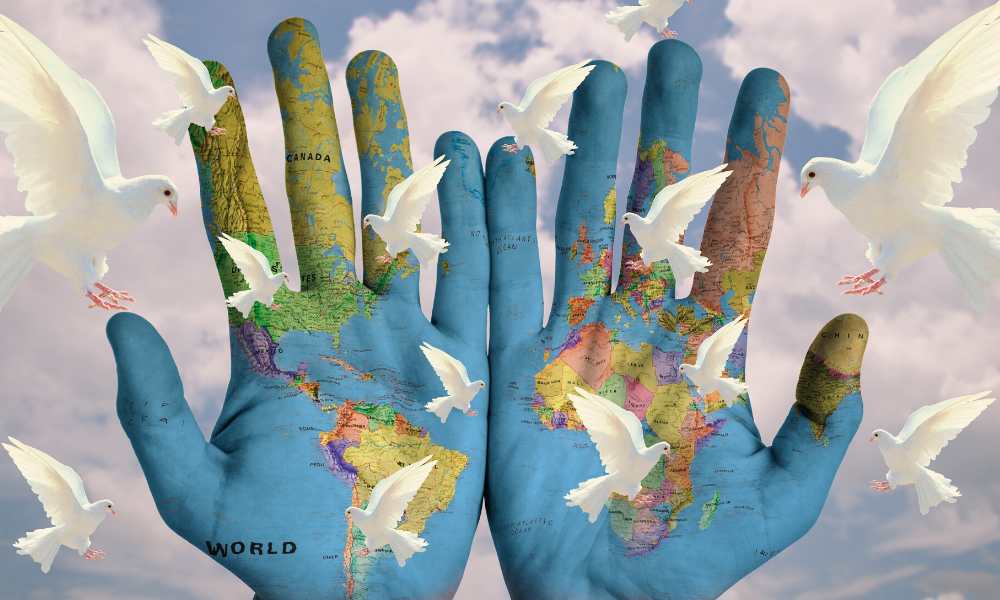Asana (posture practice) and Pranayama (breath practice) are the two limbs of yoga that most of us in America will be familiar with from hatha yoga. These two limbs are often the most accessible for Westerners and the first we learn because they deal with the physical body. But there is more to yoga than just Asana and Pranayama; exploring the Yamas and Niyamas — two limbs of yoga can help you develop a balanced and healthy life of purpose.
The Yamas and Niyamas are yoga practices for ethical living. They are conscious choices that we make in our daily lives and in our interactions with others, as we choose to offer love to all creatures and to the earth itself. They are two of the eight limbs of yoga, and together they can bring a more holistic wellness to our lives, communities, and the planet where we live.
Like all yoga words, these come from the sanskrit language. The Yamas are geared a little toward our relationships with the outside world, and the Niyamas are geared more toward our internal world – ourselves. Because we cannot control others – we can only control our own actions and responses to others – you can think of these as two sides of a coin – “stuff we DON’T do” (yama) and “stuff we DO do” (niyama).
The Yamas
Literally meaning “moral discipline,” and a reining-in or self-control, these are the practices of NOT doing:
- Ahimsa (literally “non-harming” – doing no physical or emotional harm)
- Satya (literally “refraining from dishonesty” – truthfulness)
- Asteya (literally “non-stealing” – not taking something that doesn’t belong to you)
- Brahmacharya (literally “wise use of vital energy” – we’ll deconstruct what this means in another post)
- Aparigraha (literally “non-grasping” – letting go of attachment to things and ideas)
The Niyamas
Literally meaning “moral observances” and conduct for daily living, these are the practices of DOING:
- Saucha (literally “purity” – cleanliness and hygiene of body, mind, and spirit)
- Santosha (literally “contentment” – finding joy in your own life as it is now)
- Tapas (literally “self-discipline” or “heat” – committing to doing the hard work)
- Svadhyaya (literally “self-study” – contemplating your true nature)
- Ishvara Pranidhana (literally “surrendering to the divine” – humble surrender to God and/or higher purpose)
We’ll delve more into each of these in coming weeks, but taken as a whole, these 10 practices are a roadmap for living a vibrant and healthy life in fulfillment of your deepest and truest purpose. You don’t have to belong to a particular religion in order to practice them, or to benefit from their presence in your life.
Yoga itself is not a religion, it is a practice and a pursuit of truth. You’ll notice that the yamas and niyamas share many commonalities with world religions. Applying them to my life as a Christian, in them I see resonance with the Ten Commandments, the Beatitudes of Jesus, and writings of the Apostle Paul. But even if you don’t consider yourself a spiritual person, you can still find valuable guidance in them for healthy life and relationships. This ethical blueprint of Yama and Niyama can apply to anyone, whatever your belief system may be.
Applied to our current pandemic situation, Yama and Niyama also guide us to compassionate and ethical decisions as we consider how our actions impact others. In recent months this pandemic has revealed just how connected we really are to each other, and how deeply our neighborhoods, states, and nations depend on one another. As the pandemic moves into the next phase and we all start thoughtfully considering what we will do next, these principles can inform our decisions and put love and compassion at the forefront of our actions.
In May at CF Yogi – which happens to be CF Awareness month – we’ll be highlighting one of the yamas each week as we integrate them into our hatha yoga classes (and CF Yogi Storytime, too). As practices, they create conscious intention around the choices that we make in our physical practice and our interactions with others. This first week we’re focusing on Ahimsa (kindness) as we choose to offer love to ourselves, each other, and earth itself. Find out more about Ahimsa here.






Participating in classes last month helped me understand my daughter and the CF health condition she is dealing with. It helped me instill (and recognize) a healthier positive attitude in her regarding the gifts of her impacted body. Participation de -stressed out isolation during the pandemic.
Look forward to continuing the pursuit of joy and truth